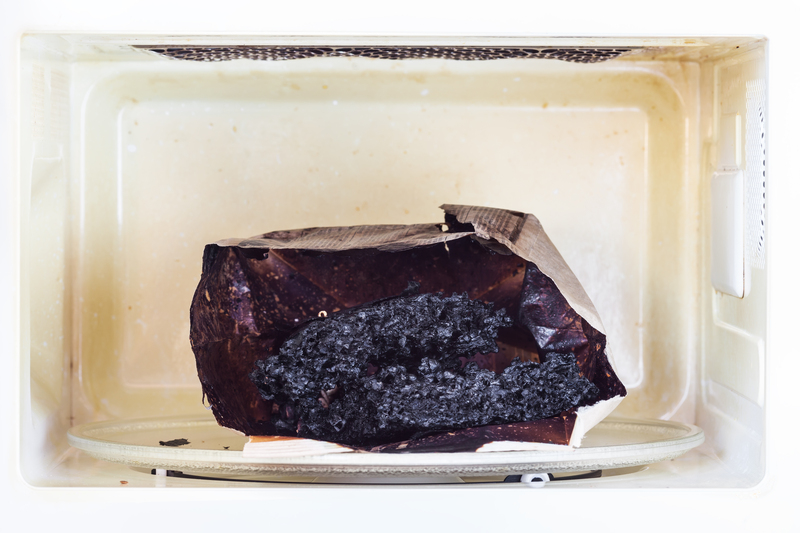Transform Your Old Upholstery
Posted on 26/10/2024
Upholstery can make or break the look of your furniture. Over time, even the sturdiest furniture pieces start to show signs of wear and tear. If you've been thinking of discarding your old furniture, think again. With a bit of creativity and some elbow grease, you can transform your old upholstery and breathe new life into your beloved pieces. This guide will walk you through the steps you need to take to achieve that goal, ensuring your furniture looks as good as new.
Understanding the Basics of Upholstery
Before diving into the transformative process, it's essential to understand what upholstery involves. Upholstery refers to the materials--including fabric, padding, webbing, and springs--that make up the soft coverings of chairs, sofas, and other furniture. These materials are prone to wear and may need maintenance or replacement over time.

Assessing the Condition of Your Furniture
The first step in transforming your old upholstery is to assess the condition of your furniture. Check for structural integrity, inspect the frames for any damage or loose joints, and examine the springs and padding. This assessment will help you determine whether the furniture is worth the effort and how extensive the restoration process will be.
Gathering Your Materials
To start your upholstery project, you'll need a few essential materials and tools:
- New fabric
- Staple gun and staples
- Scissors
- Measuring tape
- Sewing machine (optional, for more complex projects)
- Foam padding and batting
- Webbing and springs (if replacement is needed)
- Flathead screwdriver and pliers
- Fabric adhesive
Choosing the Right Fabric
The choice of fabric can make a significant difference in the final appearance of your reupholstered furniture. When selecting fabric, consider the following factors:
- Durability: Fabrics like cotton, linen, and microfiber are durable and work well for high-traffic areas.
- Style: Ensure the fabric complements your home's d?cor. Whether you prefer bold patterns or solid colors, the fabric should reflect your personal taste.
- Ease of Cleaning: Fabric that is easy to clean and maintain is ideal, especially if you have children or pets.
- Cost: High-quality fabrics can be expensive, so set a budget before shopping.
Removing the Old Upholstery
Once you have your materials ready, the next step is to remove the old upholstery. This process involves stripping the furniture down to its frame. Use a flathead screwdriver and pliers to remove staples, nails, and tacks. Keep the old fabric intact as much as possible, as you can use it as a template for cutting new fabric pieces.
Repairing the Frame and Springs
After removing the old upholstery, inspect the frame and springs for damage. Tighten any loose joints with wood glue and screws. If the springs are sagging or broken, replace them. Secure the new springs with webbing or twine, ensuring they are tightly fastened to provide proper support.
Replacing the Padding
Padding adds comfort and shape to upholstered furniture. If the existing padding is worn out, replace it with new foam padding and batting. Cut the foam to fit the seats and backs of the furniture, then layer it with batting for extra cushioning. Secure the padding in place using a staple gun.
Cutting and Attaching the New Fabric
Now that your furniture is prepped, it's time to cut and attach the new fabric. Use the old fabric pieces as a template to measure and cut the new fabric. Make sure to add extra inches for seams and hems. Attach the fabric to the frame, starting at the center and moving outwards. Pull the fabric taut to avoid wrinkles and secure it with staples.
For areas that require sewing, like cushions or piping, use a sewing machine to stitch the pieces together. Attach any additional decorative elements, such as buttons or trim, to complete the look.
Finishing Touches
Once you have attached all the fabric, reassemble the furniture if needed. Add any finishing touches, such as matching pillows or throws, to enhance its appearance. Position your newly reupholstered furniture in your desired location, and enjoy the satisfaction of your DIY accomplishment.

Maintaining Your Reupholstered Furniture
Your hard work doesn't end with the reupholstery process. To ensure your furniture remains in excellent condition, follow these maintenance tips:
- Regular Cleaning: Vacuum your upholstered furniture regularly to remove dust and dirt. For deeper cleaning, follow the fabric manufacturer's instructions.
- Spot Cleaning: Address spills and stains immediately to prevent permanent damage. Use a mild detergent and water, or a fabric-specific cleaner.
- Sun Protection: Keep your furniture out of direct sunlight to prevent fading and deterioration of the fabric.
- Rotate Cushions: Regularly rotate and flip cushions to distribute wear evenly.
- Protect from Pets: Use furniture covers or pet-friendly fabrics to protect against scratches and shedding.
Conclusion
Transforming your old upholstery can be a rewarding and cost-effective way to refresh your furniture and enhance the overall aesthetics of your home. With careful planning, the right materials, and some dedicated effort, you can achieve professional-looking results. Remember, the key to a successful upholstery project lies in attention to detail and patience. Ready to transform your old upholstery? Gather your supplies, unleash your creativity, and embark on your DIY upholstery journey today.




